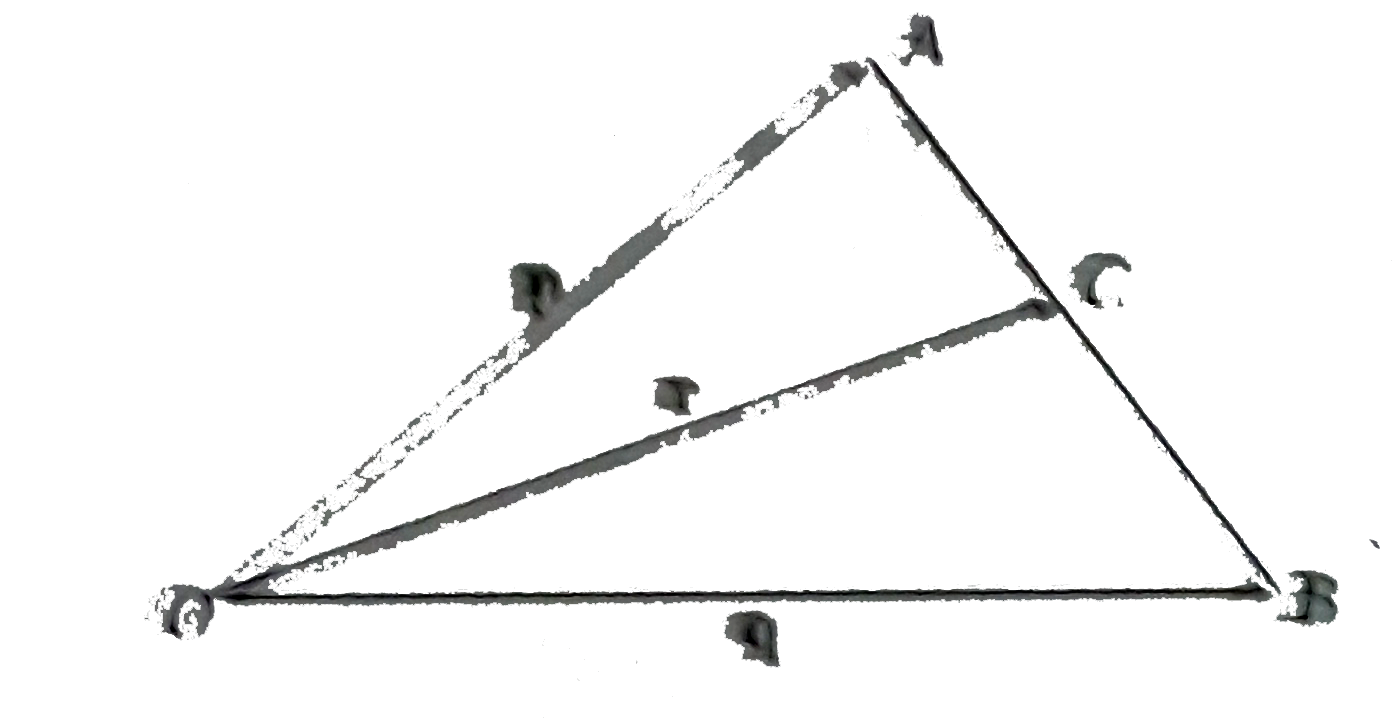Prove that the vector relation p→a+q→b+r→c+….=0 will be inependent of the orign if and only if p+q+r+.=0,wherep,q,r……… are scalars.
To prove that the vector relation p→a+q→b+r→c+…=0 is independent of the origin if and only if p+q+r+…=0, we can follow these steps:
Step 1: Understand the Vector Relation
We start with the vector relation:
p→a+q→b+r→c+…=0
This means that the weighted sum of vectors →a,→b,→c,… equals the zero vector.
Step 2: Shift the Origin
Let’s shift the origin from O to a new point O′ by a vector →α. The new position vectors of →a,→b,→c,… with respect to the new origin will be:
→a′=→a+→α,→b′=→b+→α,→c′=→c+→α
Step 3: Substitute the New Vectors
Substituting these new vectors into the original vector equation gives:
p(→a+→α)+q(→b+→α)+r(→c+→α)+…=0
Expanding this, we have:
p→a+q→b+r→c+…+(p+q+r+…)→α=0
Step 4: Rearranging the Equation
Rearranging the equation, we can express it as:
(p→a+q→b+r→c+…)+(p+q+r+…)→α=0
Since we know p→a+q→b+r→c+…=0, we can simplify this to:
0+(p+q+r+…)→α=0
Step 5: Analyze the Result
For the above equation to hold true for any arbitrary vector →α, the scalar coefficient must be zero:
p+q+r+…=0
Step 6: Conclusion
Thus, we conclude that the vector relation p→a+q→b+r→c+…=0 is independent of the origin if and only if:
p+q+r+…=0
We start with the vector relation:
p→a+q→b+r→c+…=0
This means that the weighted sum of vectors →a,→b,→c,… equals the zero vector.
Let’s shift the origin from O to a new point O′ by a vector →α. The new position vectors of →a,→b,→c,… with respect to the new origin will be:
→a′=→a+→α,→b′=→b+→α,→c′=→c+→α
Substituting these new vectors into the original vector equation gives:
p(→a+→α)+q(→b+→α)+r(→c+→α)+…=0
Expanding this, we have:
p→a+q→b+r→c+…+(p+q+r+…)→α=0
Rearranging the equation, we can express it as:
(p→a+q→b+r→c+…)+(p+q+r+…)→α=0
Since we know p→a+q→b+r→c+…=0, we can simplify this to:
0+(p+q+r+…)→α=0
For the above equation to hold true for any arbitrary vector →α, the scalar coefficient must be zero:
p+q+r+…=0
Thus, we conclude that the vector relation p→a+q→b+r→c+…=0 is independent of the origin if and only if:
p+q+r+…=0
Similar Questions
Prove that the equation pcosx−qsinx=r admits solution for x only if −√p2+q2<r<√p2+q2
View SolutionIf lines px+qy+r=0,qx+ry+p=0 and rx+py+q=0 are concurrent, then prove that p+q+r=0(where p,q,r are distinct).
View SolutionIf A,B,C are three points with position vectors →i+→j,→i−ˆjandp→i+q→j+r→k respectiey then the points are collinear if (A) p=q=r=0 (B) p=qr=1 (C) p=q,r=0 (D) p=1,q=2,r=0
View SolutionFigure show's three vectors p,q and r where C is the mid - point of AB Then which of the following relation is correct ?

View SolutionShow that the reflection of the line px+qy+r=0 in the line x+y+1=0 is the line qx+py+(p+q−r)=0, where p≠−q.
View SolutionIf lines px+qy+r=0,qx+ry+p=0andrx+py+q=0 are concurrent, then prove that p+q+r=0(where,p,q,r are distinct).
View SolutionLet →a,→band→c be non - coplanar unit vectors, equally inclined to one another at an angle θ. If →a×→b+→b×→c=p→a+q→b+r→c, find scalars p, q and r in terms of θ.
View SolutionIf P,Q and R are three collinear points such that →PQ=→a and →QR = →b. Find the vector →PR .
View SolutionIf →r1,→r2,→r3 are the position vectors of the collinear points and scalar pandq exist such that →r3=p→r1+q→r2, then show that p+q=1.
View SolutionP(→p)andQ(→q) are the position vectors of two fixed points and R(→r) is the position vectorvariable point. If R moves such that (→r−→p)×(→r−→q)=0 then the locus of R is
View Solution
